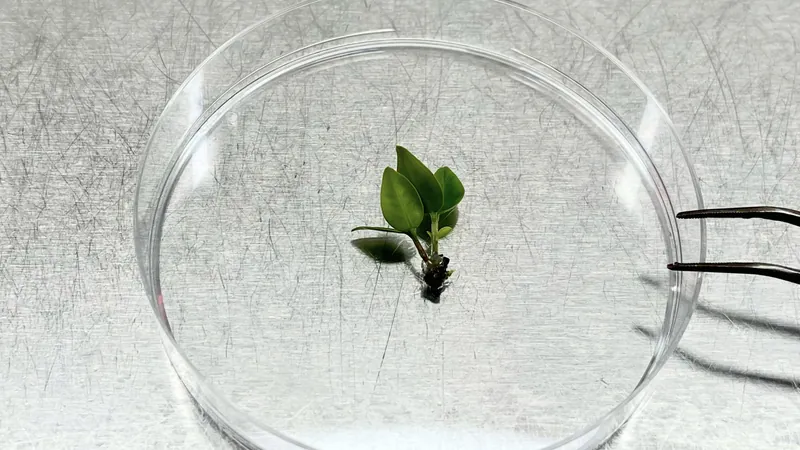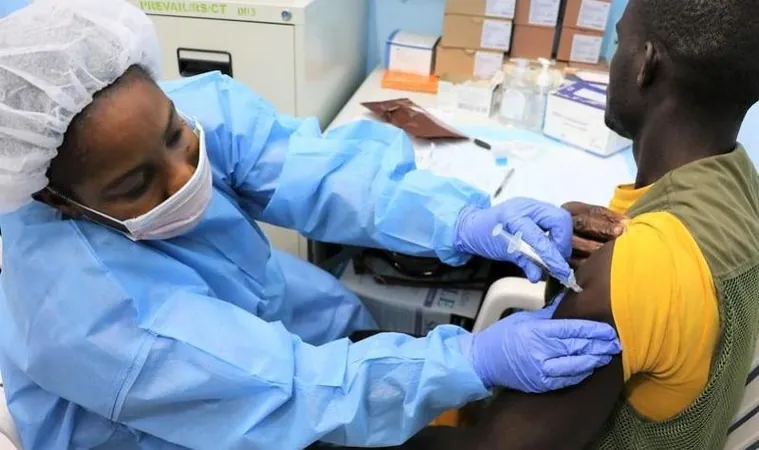
Urgent Mission: Scientists Race to Save Endangered Angle-Stemmed Myrtle from Extinction
2025-09-16
Author: Wei
A Race Against Time to Preserve a Unique Tree
Scientists in Australia are in a frantic race to save the critically endangered angle-stemmed myrtle (Gossia gonoclada) by deep-freezing its genetic material. With only 380 of these trees surviving in the wild, concentrated mainly in southeast Queensland's City of Logan, the stakes couldn't be higher.
Why This Tree Matters
This small tree, which thrives along waterways in Australia's dry rainforests, has glossy leaves, square stems, and sweet, fleshy fruit that feed local bats and birds. Its ecological role is vital; it aids in stabilizing riverbanks and supports biodiversity. However, it faces a perilous future due to habitat loss, escalating temperatures, and a lethal fungal threat known as myrtle rust.
A Fungal Nightmare
Since 2010, myrtle rust, caused by the invasive fungus Austropuccinia psidii, has wreaked havoc on the myrtle species. The fungus attacks newly grown parts of the tree, deforming leaves and inhibiting growth and reproduction. As a result, the angle-stemmed myrtle's numbers have plummeted.
Innovative Cryopreservation Techniques
To tackle this crisis, researchers are developing a groundbreaking method to freeze the tree’s shoot tips—its most vital and actively growing parts—at a chilling minus 321 degrees Fahrenheit (minus 196 degrees Celsius). These frozen shoots may hold the key to regenerating new trees when needed.
Alice Hayward, a plant molecular physiologist at the University of Queensland, explains that seeds from the angle-stemmed myrtle aren't viable due to both their reduced fertility from infections and likely poor survival rates during cryopreservation. Instead, the focus is on preserving the genetic diversity found in the shoot tips.
Success with a Close Relative
The team's method has proven successful with the closely related sweet myrtle (Gossia fragrantissima), which achieved a remarkable 100% survival rate after freezing. Researchers are now working to replicate this success with the angle-stemmed myrtle.
Building a Genetic Back-Up Plan
Ensuring enough genetic variability in their cryopreserved samples is crucial for the future survival of the species. Hayward emphasizes the need for diverse genetic representation to counter threats from diseases and climate change.
Need for Speed
As they continue their efforts, the researchers are collaborating with City of Logan authorities and other partners to identify any potential disease- or climate-resistant specimens. Hayward notes, "Preserving a diverse genetic base is essential for future breeding efforts. With the increasing threats to the species, our work needs to happen fast."
A Call to Action
But the angle-stemmed myrtle isn't the only plant in need of rescue. Hayward urges both Australia and the global community to establish cryobanks to conserve the genetic diversity of endangered species and vital food sources for generations to come. The clock is ticking, and the world must act swiftly to secure these natural treasures.



 Brasil (PT)
Brasil (PT)
 Canada (EN)
Canada (EN)
 Chile (ES)
Chile (ES)
 Česko (CS)
Česko (CS)
 대한민국 (KO)
대한민국 (KO)
 España (ES)
España (ES)
 France (FR)
France (FR)
 Hong Kong (EN)
Hong Kong (EN)
 Italia (IT)
Italia (IT)
 日本 (JA)
日本 (JA)
 Magyarország (HU)
Magyarország (HU)
 Norge (NO)
Norge (NO)
 Polska (PL)
Polska (PL)
 Schweiz (DE)
Schweiz (DE)
 Singapore (EN)
Singapore (EN)
 Sverige (SV)
Sverige (SV)
 Suomi (FI)
Suomi (FI)
 Türkiye (TR)
Türkiye (TR)
 الإمارات العربية المتحدة (AR)
الإمارات العربية المتحدة (AR)